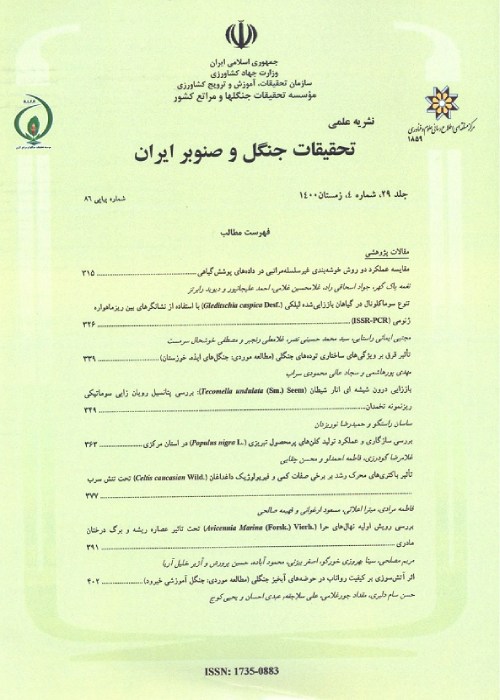Determining the most resistant almond ecotypes and genotypes to water stress for forest plantation at rainfed conditions
The investigation was conducted at two trials. At the first trial, genotypes number one (G1) and two (G2) of the cultivated almond (Prunus dulcis var. amara) with seed origin from Esfahan-Najafabad and one ecotype (E1) of the natural almond (Amygdalus scoparia) with seed origin from Esfahan-Semirom) were tested under the Statistical Design of Split Plots, with three replicates. The main treatments were five soil water contents (7, 10, 13, 16 and 20 percent) and the second treatments were the almond ecotype and genotypes. The second trial was similar to the first one at the main treatments but different at the second treatments. The second treatments were as follows: - Three almond cultivated genotypes: G4, G5, and G6 - One almond native ecotype (E2) with seed origin from Kurdestan-Paveh. The measured seedlings quantitative and physiological characteristics were as follows: stem height (SH), stem collar diameter (SCD), leaves dry weight (LDW), stem dry weight (SDW), root dry weight (RDW), leaf thickness, leaf total number (LTN) and branch numbers (BN), leaf proline rate (LPR), and leaf stomata (LS). The first trial showed that although there was significant difference between E1, and G1, G2, through the seedlings SH, LDW, SDW, RDW, SCD and LN characteristics, but the G1 was the most resistant Almond to water stress. The almond genotype resistance was due to its high root volume, which resulted in high shoot volume as well. The second trial showed that there were significant difference between E2 and G4, G5, G6 through the seedlings SH, RDW and LN characteristics. G6 had the highest and E2 and G5 had the lowest root volume. Overall, there were greater differences between the Almond species and genotypes in root dry weight than in shoot dry weight. G6 and G4 were the most resistant to water stress, respectively.
Almond , forest plantation , Isfahan , water stress , ecotype , genotype
- حق عضویت دریافتی صرف حمایت از نشریات عضو و نگهداری، تکمیل و توسعه مگیران میشود.
- پرداخت حق اشتراک و دانلود مقالات اجازه بازنشر آن در سایر رسانههای چاپی و دیجیتال را به کاربر نمیدهد.


